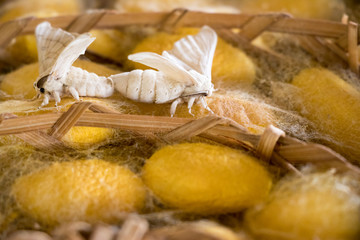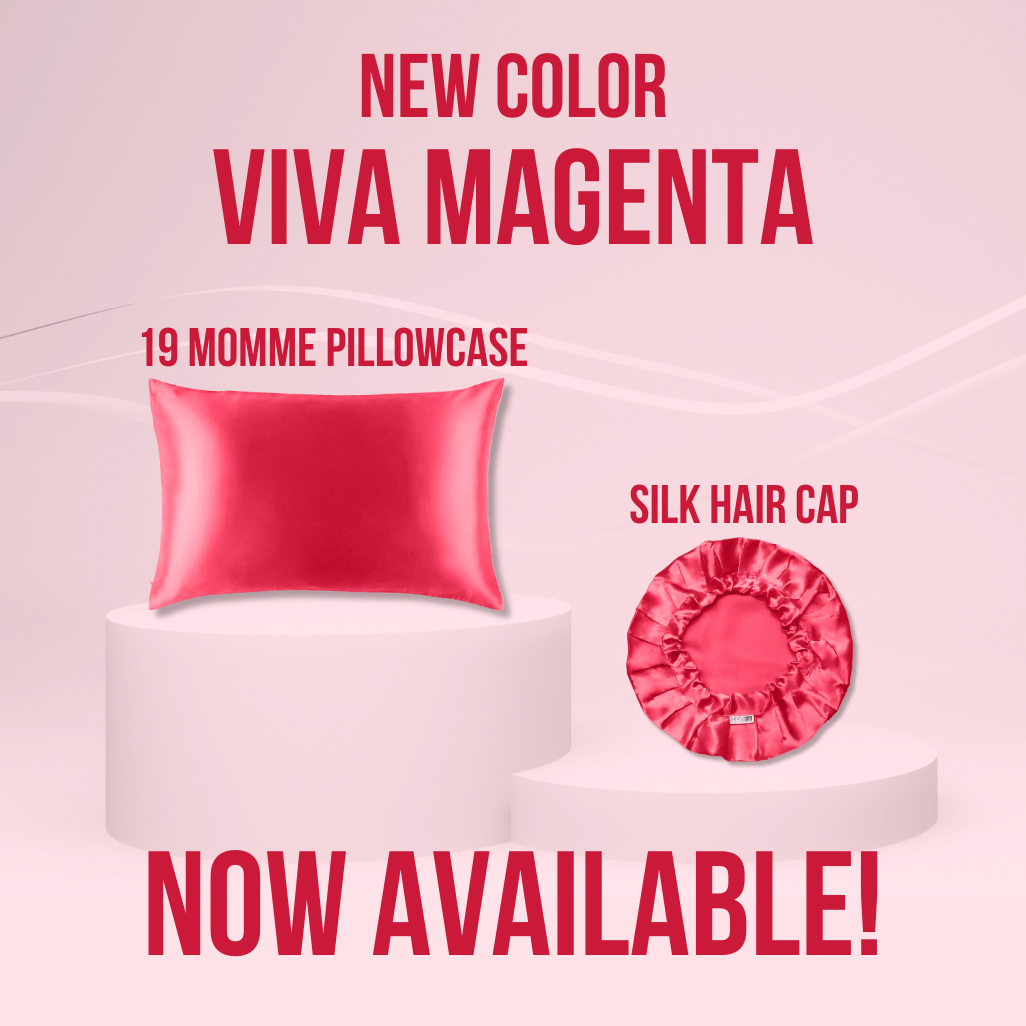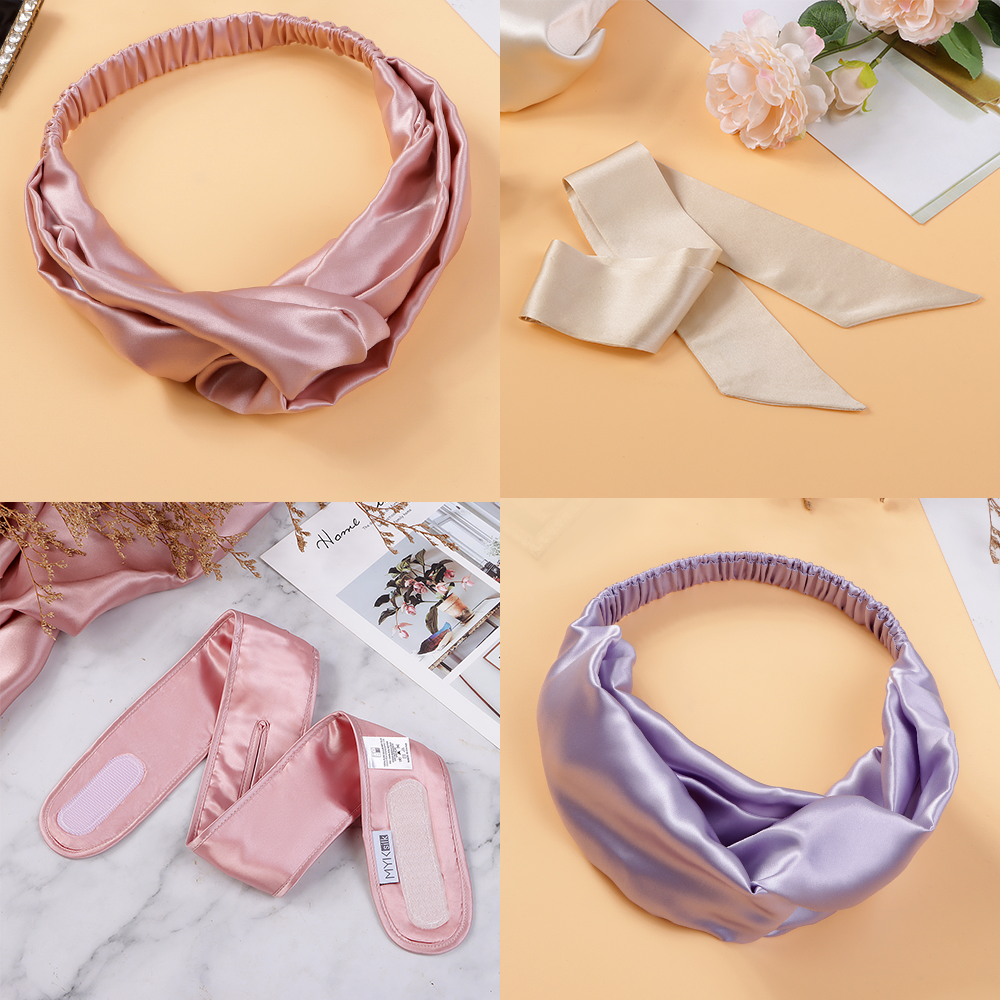
New to Silks and Confused?
New to Silks and Confused?
Silk: the luxuriant material so smooth it’s got its own adjective. But while everyone loves to call things silky smooth, how much do you really know about silk? What is it about silk that has attracted the powerful and the fashion-conscious for thousands of years? Is mulberry silk made out of berries? More importantly, how do you avoid getting ripped off when you treat yourself to something made from top quality silk?
Read on to find out the answers to these questions and more
Mulberry Silk: No, It’s Not Made Out of Berries
Thousands of years ago the method for making silk was a closely guarded Chinese secret, but these days it’s well known that silk comes from the Bombyx Mori, a type of moth more commonly known as the silkworm. But hold on! Silk isn’t actually made from the insect itself. Instead, silk is made from the cocoon the moth makes when it metamorphoses from a caterpillar to a moth.
Now, you may be asking yourself, “But what does that have to do with Mulberries?”. We all know that diet affects a person’s health – athletes need to be super careful about what they eat: healthy food is very important. While a silkworm can eat all sorts of leaves, mulberry leaves are what would happen if everything in the silkworm health food store got together and had a baby that runs marathons.
Silkworms that feast on white mulberry leaves are at their healthiest, and so they produce super long, strong single strands that are ideal for weaving into fabric. Silk made from silkworms eating mulberry is referred to as mulberry silk. Easy, right?
On a side note, since a silkworm’s threads are made to naturally repel every tiny gross thing you can imagine, better threads aren’t just softer and more luxuriant: pure Mulberry silk can also repel dust mites, is naturally antifungal, is hypoallergenic, and helps keep your skin moist. The better the silk thread, the more beneficial the silk product is.

Ok, so what about other silks?
Well, the other main type of silk clothing you might find is made from wild silk. This type of silk is produced from wild silkworms – I know, I didn’t see that coming either. Since they’re wild, these worms don’t live next to a mulberry leaf buffet, instead eating whatever they can find in their refrigerators, AKA the forest where they were born.
Wild silk is still glorious, just like all silk, but the worms’ diet and the fact that their cocoons have been sitting in a forest for days means that it’s coarser and can’t be used to make single, long threads. It also happens to be harder to dye, although it has a beautiful array of natural colors. Assam silk is an example of wild silk, and it’s often used to make Indian saris. However, wild silk isn’t the only other kind of silk.

Blended Silks & Silky Satin
You may have seen Silk Cashmere in stores, and it’s exactly what it sounds like: silk and cashmere wool got married and made a sweater together. While they’re certainly soft, blended silk fabrics don’t really have the qualities that spring to mind when we think “silky smooth”.
Now, blended silks are pretty obvious, and in general blended silk has its own benefits, mostly for thicker winter clothing. But there are also people out looking to trick you. A lot of times you’ll see someone striking a pose in a silk looking robe with a low price tag, and the product will SOUND like silk but won’t actually say it’s silk anywhere.
Silky satin is the most notorious material used in these items: it sounds like it’s a blended silk, right? But it’s not! In fact, it typically has no silk at all: silky satin is usually entirely polyester. They aren’t as breathable, feel cheaper, have none of the health benefits of silk, and aren’t even that much cheaper than even high quality pure silk goods.

Wait, how do I tell the difference between two items with 100% Pure Mulberry silk? Does it have a thread count?
One of the reasons silk is so incredibly smooth is that each thread is extremely thin. Trying to measure the quality of silk fabric with thread count would be like getting the temperature in Celsius when you’re expecting Fahrenheit. The number wouldn’t reflect the reality outside and you’d end up wearing your finest snow pants on a hot summer day. So, instead of thread count, silk is measured in Momme.

What’s this about Momme? Is it french for Mom?
Although the word looks similar to mommy, momme is a measurement of how thick a silk fabric is. Having more mommies may be better or worse, depending on your point of view, but when speaking about silk, the higher the momme the better.
19 momme silk is industry standard for sleepwear, and is light enough to wear comfortably, while still being pretty durable. It’s an excellent number for someone new to silk. However, if you want to push it higher, you can go for higher momme for even higher quality silk. Our pillow cases, for example, are 30 momme (one of the few brands that goes that high!) and as a result are some of the longest lasting and most durable silk pillowcases on the market.

OK, but how do I tell if something silk has been treated with some kind of chemical?
Pure silk itself is safe, but nearly every modern fabric is treated to ensure it has a solid color - and yes, some shady companies might use the cheapest treatment option and and up selling face-melting pillowcases or robes treated in embalming fluid.
Luckily, there are a number of reputable international organizations dedicated to testing for consumer safety. The most well known of these organizations is the International Association for Research and Testing in the Field of Textile and Leather Ecology, or OEKO-Tex for short.
The OEKO-Tex Standard 100, the most well known test, is absolutely comprehensive. It tests every single piece of a textile: for example, a shirt will not only have its fabric tested, but the buttons, zippers, pocket lining, and tags will also be tested as well.
Any company whose goods have passed the Standard 100 testing will have their test ID displayed near the OEKO-Tex logo, which you can enter into the OEKO-Tex website to make sure the company isn’t faking its certification. Be careful when buying any article of clothing produced internationally if it hasn’t undergone Standard 100 testing: they are often treated with dangerous chemicals.






Dejar un comentario
Este sitio está protegido por hCaptcha y se aplican la Política de privacidad de hCaptcha y los Términos del servicio.